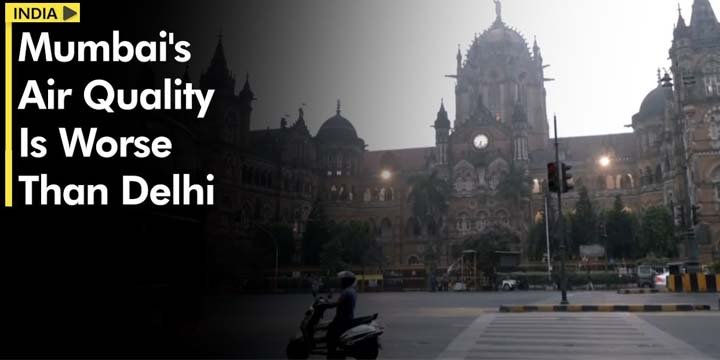Why Mumbai is witnessing more poor air quality days
Context- The winter deterioration in air quality in Mumbai is fast becoming an annual talking point, just like it has been in Delhi for the past decade. For long, Mumbai was considered largely immune to the issue of air pollution, and the associated problems of haze and smog, thanks to its coastal location. Strong sea breezes would blow dust and other suspended particles away, keeping the city’s air relatively clean.
(Credits- bazallergy.com)
But the last two years have shown that this geographical advantage no longer offers reliable protection. Last year saw the longest spell of poor air quality in the city, extending from November to January.
The air quality index (AQI) went beyond 300 in some parts of the city. An AQI of 200 or above is considered ‘poor’ air quality, while 300 and above signifies ‘very poor’ air.
Wind patterns
- The direction and strength of winds are often the key factor in determining Mumbai’s air quality. The city does not generate a lesser amount of pollutants than Delhi.
- The emissions from vehicles, industries and other sources are just as bad as in Delhi and in other major urban centres in the country. But strong winds, characteristic of any coastal location, turn out to be quite beneficial here.
- Winds usually alternate between moving from the sea towards the land, and moving from the land towards the sea. This cycle repeats every three to four days during this time of the year. When the wind is directed towards the sea, the dust particles get swept away.
- This acts as a natural cleansing mechanism. Sometimes, when the cycle gets temporarily disrupted for some reason, it has an impact on the city’s air quality.
- Last year’s unusually bad air quality was attributed to frequent and prolonged disruptions in this normal cycle of wind patterns. Instead of alternating every 3-4 days, the winds were sometimes changing directions after eight or ten days. It was not immediately evident at the time, but the prevailing La Nina conditions in the eastern Pacific Ocean could have had a role to play
- La Nina is a condition in which the sea surface temperatures in the eastern Pacific Ocean become cooler than normal. This large-scale phenomenon influences weather events across the world, and has a wide variety of impacts. Last year was part of the longest and strongest La Nina events on record.
- Last year, The frequency of the cleansing mechanism was disrupted, and the relatively calm wind conditions that Mumbai sees for about a week after the withdrawal of the monsoon prevailed for almost two months.
- That meant that even when the wind was moving towards the sea, it was not strong enough to blow away the pollutants effectively. Both of these could have been influenced by La Nina
Different trigger this time
- But La Nina is over, and has been replaced by its opposite phenomenon, El Nino. It is not as strong as La Nina was, and its effect is not yet known. Last week’s dip in air quality in Mumbai was triggered by a completely different reason
- Last week, winds in Mumbai were relatively calmer as the monsoon retreated from the city. Also, the city’s temperature soared to a four-year high for October. That created a big temperature gradient between the city and the nearby hilly regions in the Sahyadri ranges.
- As a result, winds from these areas began moving towards Mumbai, picking up dust from the major construction projects being carried out in Navi Mumbai and surrounding areas.
Overall deterioration
- Unfavourable local weather conditions are certainly not the cause of bad air quality in Mumbai. The baseload generation of pollutants is very high and steadily getting over the city’s carrying capacity.
Conclusion- Long-term trends show a clear decline in Mumbai’s air quality, particularly in the last one decade. The reasons are quite obvious. There is a lot more economic activity, more vehicles, more construction, more consumption and more emissions. And there is no matching effort to mitigate the impacts.
Syllabus- GS-1; Geography; GS-3; Environment
Source- Indian Express



